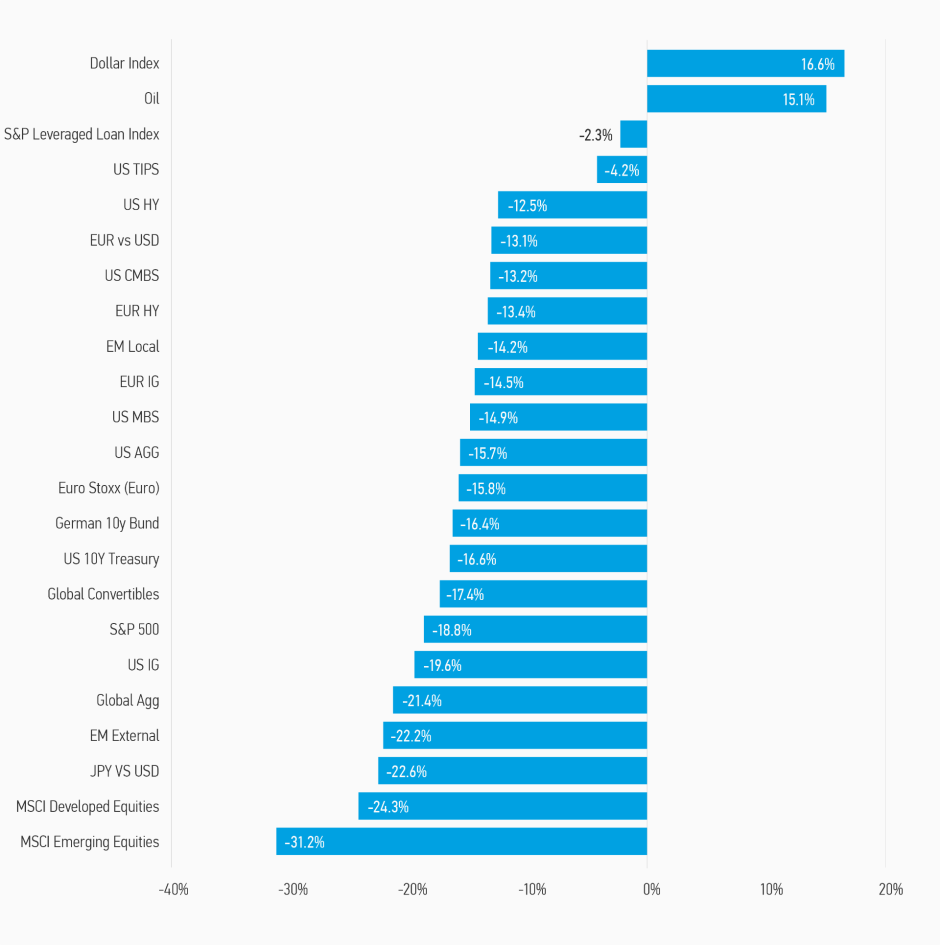
Morgan Stanley IM: Dazed and Confused
Bond markets were a bit more orderly in October than the mayhem experienced in September.
25.11.2022 | 06:36 Uhr
Here you can find the complete article
That said, markets were still mixed, and investors could be excused for feeling a bit dazed and confused with regards to volatility, dispersion of returns, illiquidity, central bank policies and deciphering how to determine value. Nominal U.S. Treasury and investment grade U.S. dollar bond yields moved substantially higher as strong inflation and labor market data continued, to the disappointment of the Fed and other central banks. However, just to confuse things more, real yields on 10-year U.S. TIPs fell approximately 14 basis points (bps),1 substantially outperforming nominal bonds, despite continued hawkish rhetoric coming from the central banking community. Does this mean real yields are high enough to sufficiently slow economic growth to bring down inflation to acceptable levels?
On the other hand, advanced economy bond markets outside of the U.S. generally performed well, boosted by continued fallout from the UK liability-driven investment (LDI) maelstrom in September, and a pivot by several central banks (Australia and Canada) to downshift their tightening pace. Other central banks like those in Sweden and Norway are also expected to shift to a slower pace of tightening. Other than this news, data or policy pronouncements did not particularly justify this move in and of itself, but German government 10-year yields had risen over 50 bps in September and a correction was understandable.2 Emerging market local yields did not have a great month, with most countries experiencing yet again higher yields as inflation pressures fail to abate.
Despite the gyrations in government bond yields, credit markets performed well. Under constant threat of weaker economic data (this is what central banks are striving for) and higher U.S. and Euro yields, credit markets performed well, particularly high yield. In fact, after widening 68 bps in September during the British LDI meltdown, U.S. High Yield spreads tightened 88 bps in October!3 A truly impressive performance given the sideways performance of equities. This great performance was also helped by record low issuance, continued good news on default rates, good third quarter results so far for S&P companies (tech stock woes notwithstanding), and locked in term financing. Investment grade spreads also held their own: impressive.
DISPLAY 1: Asset Performance Year-to-Date

The one continuing negative (outside of U.S. rates) has been the performance of the mortgage/securitized credit markets. U.S. agency spreads continued to widen as investor sponsorship remains sparse and the withdrawal of buying by the Fed, other official institutions, and banks weigh on the market despite the paucity of new supply.
Another interesting development in October was the mixed performance of the U.S. dollar. It was not a one-way bet. For the first time in a while, the U.S. dollar fell against almost half of the currencies we follow. In particular, EM currencies led the pack, with the Brazilian real, Hungarian forint, and Polish zloty leading the way.




Diesen Beitrag teilen: